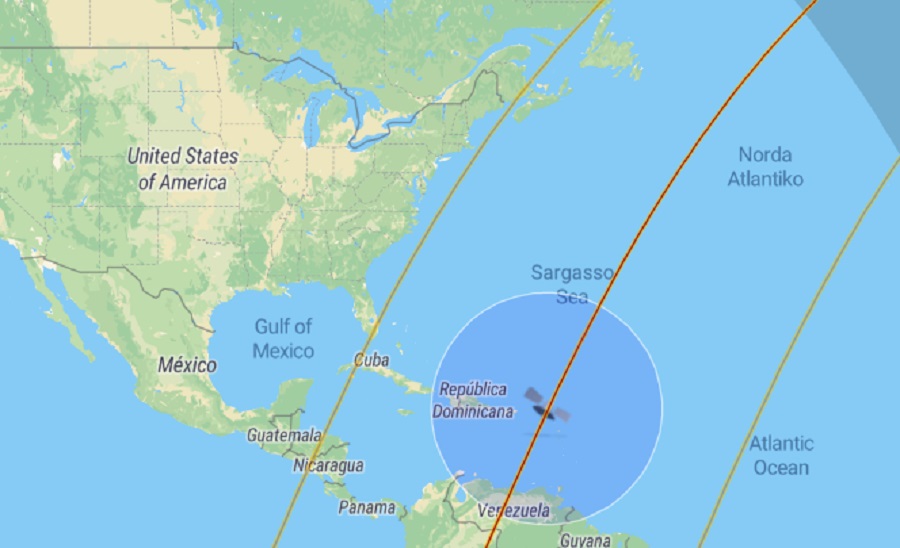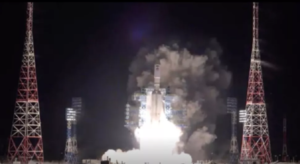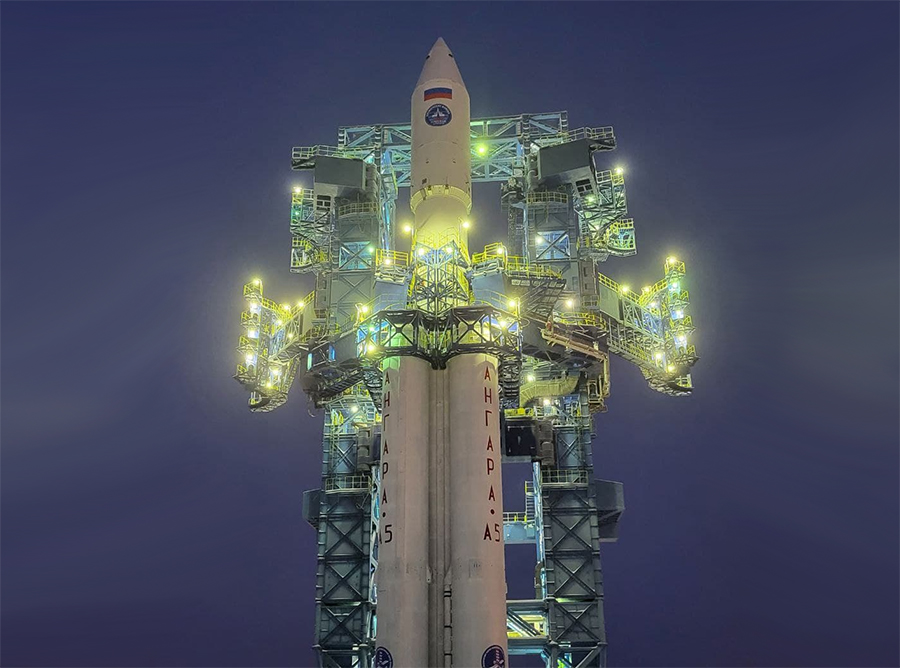
An updated forecast released today suggests that an out-of-control Russian rocket tumbling back towards Earth could strike this afternoon around 1:24 pm ET, perhaps near or over the islands of the eastern Caribbean. In an updated forecast shared by Joseph Remis on satflare.com and Twitter, it shows the rocket, or what’s left of it, coming down around Anguilla, Barbuda, and Saint Kitts and Nevis shortly after lunchtime today. Because the rocket is uncontrolled and could shift around erratically as it enters the Earth’s atmosphere, impact could occur outside of that estimated strike time by as much as two hours. If the rocket stayed aloft for another orbit, the next possible path it could take would bring it near the entire U.S. east coast, with the out-of-control mass crossing over southern Florida near West Palm Beach on the east coast and exiting over the Everglades National Park on the west coast, crossing over the central Florida Keys on its way over Cuba. This out-of-control Russian rocket is the Persei upper stage rocket which carried a dummy payload into space as part of Russia’s Angara A5 rocket test.
On December 27, the Russian Angara A5 rocket lifted-off from the Plesetsk Cosmodrome. Named after a river in Siberia, the Angara rocket is the first heavy-lift launch vehicle used by the Russians in decades. The December 27 launch was the third test flight of the giant rocket. While the launch was flawless, an upper-stage rocket failed to successfully fire.

The Angara’s first two stages fired as planned; however, the third stage, a Persei rocket, failed to fire a second time. While the first fire helped put the dummy payload it was carrying into low-Earth orbit, the failure of the second fire failed to put the dummy payload into a geostationary orbit. Instead, the 20 ton mass is tumbling out of control to Earth. While Roscosmos shared pictures and a congratulations message before and immediately after the Angara launch, they’ve offered no comment on the Persei rocket and the failure for it to fire a second time, deferring instead to the Russian military which was responsible for the launch. As of press time, the Russian military has offered no comment on this rocket.
According to NORAD, short for North American Aerospace Defense Command, the tumbling rocket and payload has been numbered “50505” by the U.S. authorities.
Russian newspaper Moskovski Komsomolets wrote shortly after launch that “…the 20-ton blank or what remains of it will smoothly descend for another two or three weeks, until most of it with the remaining fuel burns out in the dense layers of the atmosphere. Where the leftovers will fall is a question. ”

Commercial and private entities, such as SATFLARE, N2YO.com, and Aerospace Corporation are tracking the out-of-control rocket and are providing maps and statistics regarding it on their respective websites. On SATFLARE.com, a forecast created by Joseph Remis shows the regularly updated, shifting timeline and potential impact area. However, if the rocket comes in a little faster or slower, due to its tremendous speed, it may end up striking Earth elsewhere along its potential orbital planes. Even if the rocket doesn’t strike these areas, debris could light-up the sky and appear as a shooting star or bolide.
The rocket and dummy payload is estimated to be roughly 20 tons. It is not yet known how much of the rocket or its payload will make it to the Earth’s surface. Center for Astrophysics Astronomer Johnathan McDowell hypothesized on Twitter that a dry mass of 4 tons could make its way down, allowing for “some bits to reach Earth surface.”
Uncontrolled reentry. Dry mass probably around 4 tons including the payload. So some bits may reach Earth surface.
— Jonathan McDowell (@planet4589) December 27, 2021
This is not the first time an out-of-control rocket has threatened the United States. In May, the Long March 5 main stage tumbled back to Earth in an uncontrolled manner. While much of the rocket stage burned-up upon re-entry, some parts did survive re-entry and impacted Earth.
Because the Earth is covered by more water than land, there are better chances any out-of-control rocket would strike the ocean rather than populated land areas. While odds favor that this out-of-control rocket will impact an uninhabited area, it is too soon to say with certainty whether or not that will be the case with this Russian rocket.
Even after impact, it may take time for scientists and space trackers to confirm such an impact. Experts will be looking for visual reports, seismic clues, and at satellite photography to see if the high-speed mass strikes anything.